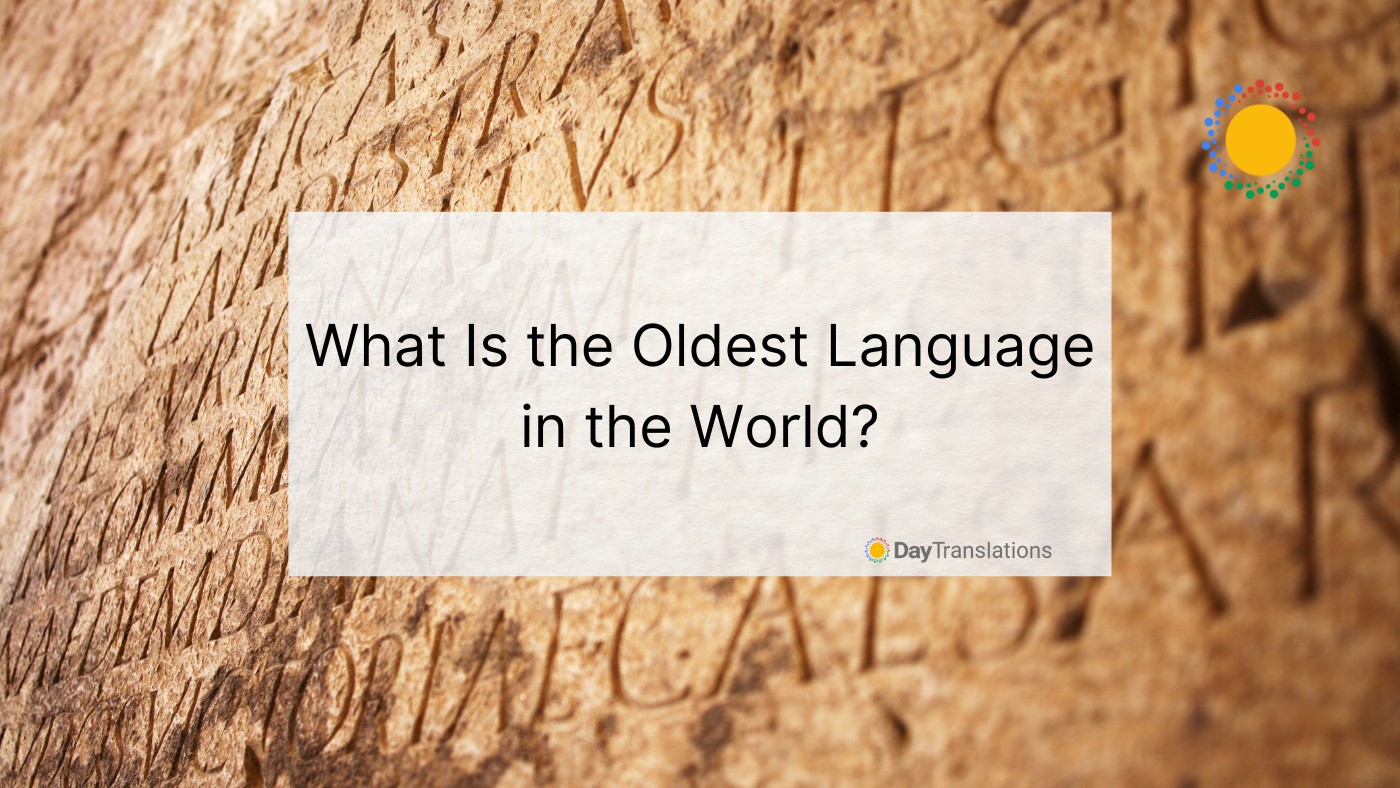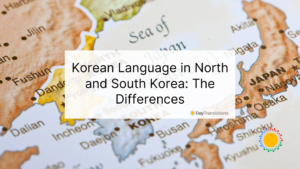Updated 2022
Currently, about 7,000 languages are spoken around the world. While some of them are ancient, many of them are of modern languages that evolved from older roots. The human language dates back to ancient times and evolved over the span of hundreds of thousands of years. But did you know that a mere 23 of the 7,000 dominate the world’s population?
The languages spoken today belong to different language families and their origins date back thousands of years ago. Researchers are still finding it difficult to pinpoint the oldest language in the world. However, the earliest written languages (literary language) and oldest texts on record are the cuneiform script that was discovered in Mesopotamia that dates back to the 8th millennium BC. The Sumerian script that started in the 3rd millennium BC was developed for funerary inscriptions because the Sumerians were concerned about their afterlife.
For a long time, humans used primitive sounds and gestures as their means of communication. Our first words as a species would probably sound alien in our world today. Structured languages and written languages from the oldest texts were seen in scriptures that were written about 10,000 years ago. Linguists say that a language’s age should be determined by the first time it appeared in texts and its use in the present.
Since many official languages are thousands of years old, a number of ancient languages could be included in the list of the oldest languages in the world. Some of them are already extinct; other languages survived and still exist for a specific purpose, while others are still widely used, even if the number of speakers is drastically reduced.
Finding the Oldest Language in the World
In this post, we will explore the oldest languages and a little history behind each of them! Keep in mind that these languages are the ones that survived the test of time and are still spoken today and still in use, so it might not contain a concise collection of the world’s oldest languages. Here’s a look at the most fascinating ancient languages, some of which might have changed in many ways, and some that continue to captivate the human mind!
Latin
Inscriptions of the ancient language of Latin first appeared in 75 BC. There is also Old Latin that was used to communicate before this, a language that influenced numerous languages. Victors of many battles in wars that were waged on the Italian Peninsula throughout the middle ages spoke Latin. The Roman Empire elected to make Latin its formal spoken language, making it an important language in the world at that time.
Latin was the origin of all the other languages that form the Romance family of languages – Spanish, French, Italian, Portuguese, Catalan, and Romanian and many words today, including a number of words in modern-day English. Latin is still around and spoken today. In a sense, it is the foundation of most European languages. It remains an official language in the Vatican and in Poland. Millions of people are still learning the language, although it is mainly taught as a course in higher education classes.
Armenian
Armenian belongs to the Indo-European language family. Its oldest surviving text and first written record is a translation of the Bible that was done in the 5th century. Based on the latest texts that were found, the language likely started in 450 BC. Armenian is still a living language and its first language speakers are about 5 million. Speakers of Armenian are located in Iran, Russia, and Ukraine.
Korean
The Korean language is considered as one of the oldest languages in the world. It is a language isolate that came from Proto-Korean and Old Korean. It evolved further from Middle Korean to Modern Korean. Korean was used in ancient times during the period of the Three Kingdoms, where the Unified Silla was the most dominant. During the time China already had an influence on Korean and samples of Old Korean text used Chinese characters that were adapted to the existing Korean language at that time, making it difficult to decipher.
Middle Korean came into being around the 15th century, and it used Hangul, the unique Korean characters that were developed by King Sejong the Great and his scholars as a means for written communication. More distinct is Modern Korean which was established in the 17th century. It is now spoken in South Korea, North Korea, Russia, Kazakhstan, Uzbekistan, Japan, and China. It is also spoken today in several communities in the U.S. and other parts of the world. This is one of the reasons why Korean translation services are globally in demand.
Hebrew
The first book and written language of Hebrew script go back to 1000 BC. The language is more than 3,000 years old. It is an old Semitic language and is declared Israel’s official language. Hebrew was labeled a holy language because it was used mainly for religious texts. It disappeared for a time (from 200 CE to 400 CE) and people stopped using Hebrew for a while before it made a resurgence to become the written and spoken language of the Jewish community around the world again during the rise of Zionism in the 19th Century.
Modern Hebrew, however, isn’t generally referred to as the Hebrew language any longer. It is called either Israeli Hebrew or simply Israeli. Modern Hebrew was also the first official language of Palestine after the First World War. Today, it’s the one and only official language of Israel.
Aramaic
The Aramaic language donated plenty of words to the Arabic language and Hebrew language. It is also an influencer of Farsi. It made it to the list of some of the oldest languages in the world based on the diplomatic documents and written record that was used among Aramaic states from the 10th century BC.
The various dialects of modern Aramaic are spoken in several countries today, such as Lebanon, Israel, Syria, Iran, Iraq, and other countries in the West such as the United States, Australia, Europe, and Russia. Between 579,000 and 1,000,000 people speak Aramaic as their native language. During its long course of existence, Aramaic has served as a sacred language and was also the native language of various Semitics from the Near East.
Chinese
The first script that appeared with Chinese characters was from 1250 BC. Chinese started in the late Shang dynasty. Its writing system is more than 3,000 years old. Currently, it is the language with the most number of first language speakers. According to the latest data, about 1.2 billion speak Chinese as their first language in all its variations and dialects. Native speakers of Chinese are located in 37 republics across the globe. Although it can be subdivided into various different languages, Chinese dominates the modern stage of human language. The roots of Mandarin Chinese were traced back to 1250 BC and were found on oracle bones!
Archaic or Old Chinese was the language that was commonly used in the early to the middle parts of the Zhou Dynasty that existed from the 11th to 7th centuries BC. Evidence of Old Chinese texts were seen inscribed on artifacts made of bronze, in Shujing (Classic of History), Shijing (Classic of Poetry) poetry, and parts of the Yijing (Classic of Changes or I-Ching).
The development of the Chinese language took thousands of years and several dynasties to complete. Different forms of Chinese are spoken in different parts of China. Today, Mandarin Chinese and Cantonese are the most prominent forms of the language.
Greek
Greek made its first appearance in 1450 BC. About 13 million people live in the modern world Cyprus, Albania and Greece, and the Black Sea speak the ancient Greek language as their common language. Its long history makes Greek one of the oldest languages spoken in Europe. The first confirmed Mycenaean Greek runs back to 1450 BCE.
The Greek language has historical significance and played a key role in the evolution of Indo-European languages. The original versions of the epic poems Odyssey and Iliad were written in Greek. Many of the foundational documents in Western philosophy, like the works of Aristotle and Plato, logic and mathematics, astronomy, and other branches of science were originally captured in written form in Greek. Koiné Greek was used in writing the Christian Bible’s version of the New Testament.
Modern Greek is the national language in Cyprus and Greece as well as one of the official languages of the European Union. It is also an official language in the EU and the primary language of Greek communities around the world and in Turkey, Albania, and Italy.
Egyptian
The ancient Egyptian language is considered one of the 10 oldest languages in the world, as it is already about 4,700 years old. It is the oldest known language in Egypt. The first complete sentence in Ancient Egyptian traces back to 2690 BCE. Autobiographical writings found on walls of Egyptian tombs were said to be created around 2600 BC to 2000 BC. In Egypt, the language is the country’s oldest and most spoken language.
Proto language hieroglyphs that were found in the country, dates back about 600 years before the appearance of complete texts in Egyptian. A post from a temple gate in Philae that was recently discovered had hieroglyphics that were from the year 396 CE. It was also around this time that written records done in Tamil were found.
Egyptian is still in use today as the Coptic Church’s liturgical language.
Sanskrit
Linguists thought Sanskrit was very influential to several languages in Europe, including Farsi. They also believe that the language came from Tamil. Sanskrit, which is 4,000 years old (some say its 6,000 years of age), used to be the language of the classics in India. Sanskrit is still an official language in the Indian Peninsula despite its limited use as an everyday language today. Rigveda, which is a collection of Vedic Sanskrit hymns, is where the first and earliest examples of the language can be found.
Sanskrit, which is considered a sacred language, first appeared in 1500 BC and was hailed as the gods’ language. The principles of the language were used during the construction of the computer’s basic language. It consists of 49 letters and is spoken in Uttarakhand, in India’s Himalayan North. The language combines sound vibrations and is often used for mantra meditation in an area that is teeming with Hindu temples. Many people in India and beyond also use it as a second language. Additionally, Sanskrit has inspired countless history research topics, from its intricate grammatical structure to its profound influence on ancient and modern philosophical, scientific, and literary works. Its preservation and revival remain an essential part of understanding India’s cultural and linguistic heritage.
Tamil
Tamil is the oldest language still in use today. By order of appearance, the Tamil language (part of the family of Dravidian languages) would be considered the world’s oldest living language as it is over 5,000 years old, with its first grammar book having made its first appearance in 3,000 BC. This member of the Dravidian family is probably the longest surviving language in the world and also the oldest written language.
Since Tamil is the oldest modern language, it definitely ranks high up on the list of the world’s 10 oldest languages. The literature collection in the Tamil language, which is a classical language, is very vast. Tamil literature and written script are also varied. Tamil is the oldest language of our modern time and is very much a living language and thousands of newspapers are still published in the language. This language is also recognized as the oldest language in the world. Many believe that Tamil dates back to 2500 BC.
It is still a very popular language, and many people speak it across various areas. It is also one of the official language in Singapore, Sri Lanka. In India, native speakers live in some 34 territories and states, including Tamil Nadu, Karnataka, Andhra Pradesh, Puducherry, Kerala, Delhi, Gujarat, Goa, and Assam. It is believed that around 78 million people speak Tamil.
Is There A Simple Answer to this Complex Question?
Numerous languages could still make it to this list. The Arabic language, for example, came about 512 CE and is spoken in several countries in the Middle East, including Saudi Arabia, the UAE, Syria, and North Africa. Arabic is also the foundation of many English words and phrases. Old Persian and the modern Persian language, which is equally as important as Arabic, can easily be added to this category too. While spoken languages dominate human history, non-verbal communication methods like Morse code have also played an essential role, particularly in emergency signaling and telegraphy. Today, anyone can experiment with this unique system using a Morse code translator.
Lithuanian is another old language that has some similarities to Sanskrit and Farsi. It is still spoken by more than three million people in Europe, Australia, and Canada. Many European languages can also be considered ancient. Like Irish Gaelic and Scottish Gaelic, which date back to the Bronze Age and the 4th century AD.
And what about the extinct Sumerian language? Should it be disregarded in this race since it is no longer spoken? Even though it was the origin of most of the Tamil words and new language? There’s also Icelandic, which dates back to the 10th Century and has been shaped by many cultures across the world. Then there’s also the unique Basque, which has no connection to any other living language. Yet the language dates back to prehistoric Europe.
Final Thoughts
It is actually difficult to determine which languages are the oldest. Several linguistic scholars lament the scarcity of evidence to make concrete conclusions. With so many languages all vying for a position in the top ranks of the ancients, pinpointing an exact winner would be nearly impossible.
Finding the one language that outdates them all might seem like a never-ending quest. But learning more about the foundations of human language sure is fascinating! We reckon it’s high time research scholars let us in on the best answer here!
Do you have anything interesting to add to this conversation? Feel free to comment in the section down below!












